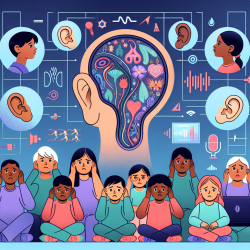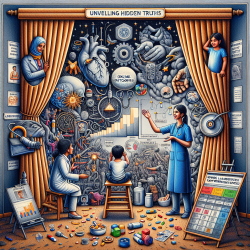Introduction
The COVID-19 pandemic has significantly transformed the landscape of healthcare delivery, with virtual platforms becoming a pivotal medium for patient care. This shift is particularly evident in cardiac rehabilitation (CR) programs, which have transitioned from in-person to virtual formats to continue supporting patients with cardiovascular diseases. The study titled "Characteristics and correlates of disease-related knowledge and exercise self-efficacy among cardiac patients attending virtual cardiac rehabilitation during the first COVID-19 lockdown in Peru" provides valuable insights that can be leveraged to enhance online therapy services, such as those provided by TinyEYE.
Key Findings and Their Implications
The research conducted in Peru during the first COVID-19 lockdown highlights several critical outcomes:
- Improved Knowledge and Self-Efficacy: The study found significant improvements in disease-related knowledge and exercise self-efficacy among cardiac patients post-virtual CR. This suggests that virtual platforms can effectively deliver educational content and support behavior change.
- Correlation with Cardiac Diagnosis and Procedures: Post-CR knowledge and self-efficacy were significantly correlated with patients' cardiac diagnoses and surgical procedures. This highlights the importance of tailoring educational content to individual patient profiles to maximize outcomes.
- Potential for Broader Application: While the study focused on cardiac patients, the principles of personalized education and support can be extended to other therapeutic areas, including speech-language pathology.
Applications in Speech-Language Pathology
For practitioners in speech-language pathology, the findings of this study underscore the potential of virtual therapy platforms to enhance patient outcomes through data-driven, personalized approaches. Here are some strategies to consider:
- Personalized Learning Plans: Just as the study tailored content based on cardiac diagnosis, speech-language pathologists can develop individualized therapy plans that address the specific needs and challenges of each child.
- Leveraging Technology for Engagement: Utilize interactive tools and resources to engage children and reinforce learning, similar to the virtual CR sessions that combined education with physical activity.
- Continuous Assessment and Feedback: Implement regular assessments to monitor progress and adjust therapy plans accordingly, ensuring that interventions remain effective and relevant.
Encouraging Further Research
The study also highlights the need for ongoing research to explore the full potential of virtual rehabilitation programs. Speech-language pathologists are encouraged to contribute to this body of knowledge by conducting studies that examine the effectiveness of virtual therapy interventions in different contexts and populations.
Conclusion
The transition to virtual platforms presents both challenges and opportunities for healthcare providers. By drawing on data-driven insights from studies like the one conducted in Peru, practitioners can enhance the delivery of online therapy services and improve outcomes for children and other patient groups. To read the original research paper, please follow this link: Characteristics and correlates of disease-related knowledge and exercise self-efficacy among cardiac patients attending virtual cardiac rehabilitation during the first COVID-19 lockdown in Peru.










